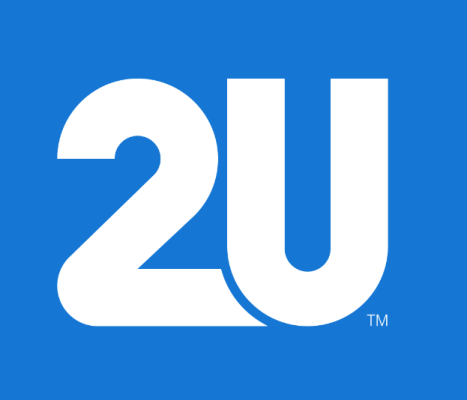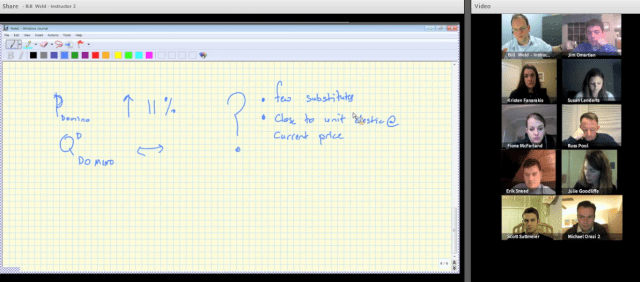Four years after it launching its first graduate program with USC, 2U today has announced its foray into undergraduate education through a new program called Semester Online. The company will be powering a virtual classroom environment and interactive platform for a consortium of 10 top universities, including some it’s already been working with (Washington University in St. Louis and UNC) — along with newcomers like Northwestern, Emory and Brandeis — to name a few.
Beginning in the fall of 2013, the program will be open to any student enrolled in an undergraduate program anywhere in the world, with courses set to debut next fall (along with a handful of new institutions). Semester Online’s courses will feature the same faculty and curricula as their brick-and-mortar counterparts.
When we spoke to 2U co-founder Jeremy Johnson earlier this year, the startup (known then as 2tor) was on its way to closing a $26 million series D round, which would bring its total funding to just under $100 million and make it one of the most-funded startups in education (and the country). Naturally, I was curious why a company that partners with graduate schools to build, administer, and market online degree programs needed so much capital, especially when all reports were that the business was growing at a healthy clip on its own.
In the world of quick flips and early exits, where speed and “just ship it” rein, his answer was somewhat unusual: Today, there’s a lot of lip service being paid to disrupting education, but if you’re actually going to make a difference and create an online experience that produces student outcomes equivalent to their offline counterparts, then you have to take the long view, he said. You have to be willing to spend money and invest years in development.
Thanks to its deep pockets, 2U typically invests up to $10 million in each program. Higher ed institutions, especially graduate programs, have historically shied away from offering substantial (if any) online degree programs. By supplying their own capital, tools and expertise, and by partnering with institutions and faculty to customize the platform to fit their needs and interface, the startup was able to convince respected graduate programs at USC, Georgetown and UNC that they were committed.
If the goal is to create viable online education programs, then schools want to be able to give credit and apply the same admissions process (and criteria) they use in their on-campus programs, along with increasing their enrollment and margins. It also helps that the company spent several years developing its own web-based infrastructure that gives professors the ability to share materials with students, provide lectures and interactive lessons, student support, social networking, as well as mobile apps that enable students to participate in live, synchronous class sessions via webcam — from anywhere.
Of late, one of the hottest subjects in education has been MOOCs, otherwise known as Massively Open Online Courses. There has been a parade of new MOOC platforms over the last six months, with the most recognizable names now being Coursera, Udacity and EdX, the collaboration between Harvard, MIT and UC Berkeley. MOOCs have been pegged by some as representing the future of the educational system, democratizing education, bringing quality learning content to people of any age, in any corner of the world for a small fee — if not for free.
Coursera, in particular, has received a lot of attention in part because it raised $22 million from some high-profile investors early on in its development, but also because it focuses on partnering with and offering classes from only the top institutions. Touted, of course, as an online Ivy, Coursera has scaled quickly and now hosts about 200 courses from 33 domestic and international schools and reaches over 1.3 million students.
However, while MOOCs are great for distance learning and continuing education, most platforms aren’t credit-bearing — meaning they don’t offer diplomas. The other strike against it is that, because most of them are free, they don’t have business models, and it remains to be seen how they plan to monetize and just how much value there is for teachers. Lately, Coursera has pretty much had to bat away colleges looking to get on its platform. But how much of this eager adoption is a result of institutions feeling pressure to “go digital” and open their walls? Why can’t a university have its teachers learn how to teach in this new context and then go develop its own?
What’s so cool about 2U’s new platform is that it’s not a MOOC. As Inside Higher Ed’s Steve Kolowich wrote today, 2tor’s program really represents the next phase of this evolution and is the first real example of a collective of top higher ed institutions offering the same courses and teachers that a student would find in the physical classroom, yet in an online-only setting that actually offers credited courses to students who aren’t enrolled at the universities offering them.
That’s not to say there aren’t alternatives. StraighterLine offers a subscription-based (and relatively affordable) service that allows students to take a variety of accredited, general ed courses online, but it focuses on the first two-years of colleges, can’t offer you a diploma and hasn’t yet added course content from the cream of the crop.
Instructure recently launched a cool hybrid MOOC, which offers both massively online, free classes as well as tuition-based online courses from some top schools, like Brown University. I’d say it’s the closest to 2U, as its platform is strong on the customization front for schools and has the quality LMS tech to back it up.
But, again, it isn’t investing $10 million in building real, integrated, credit-bearing online classrooms for every degree program. And, for the closed content, only students who are actually enrolled in the school can access and search their online course options.
Udacity wants to move into this space as well, if not by offering accredited courses, by building out its job placement tools and network.
In comparison, 2U’s platform offers undergrad courses in a virtual classroom that is instructor-led, has video-based discussion groups and virtual seminars and lectures, while maintaining some sort of emphasis on learning and collaborating in small groups. That’s not to say that this form is “better” than that of MOOCs, but it does feel more like on-campus education and is way, way more personal. My two cents would be that learning is inherently social and that’s something MOOCs don’t really do well yet.
The other important feature for 2U is the fact that it offers selective admissions criteria for each course. This basically means that students have to pay and schools set the admissions criteria — and the same goes for prices/tuition. 2U also does a rev share deal with its partner institutions. So, at the end of the day, students may even end up paying the market rate, which is the biggest strike against 2U. Though of course, it depends on how the company looks at its role in the space. If they’re serious about innovating and disrupting higher education and not just revenue generation, it needs to be part of higher ed’s pricing solution, not the other way around.
More on the new 2U here.


